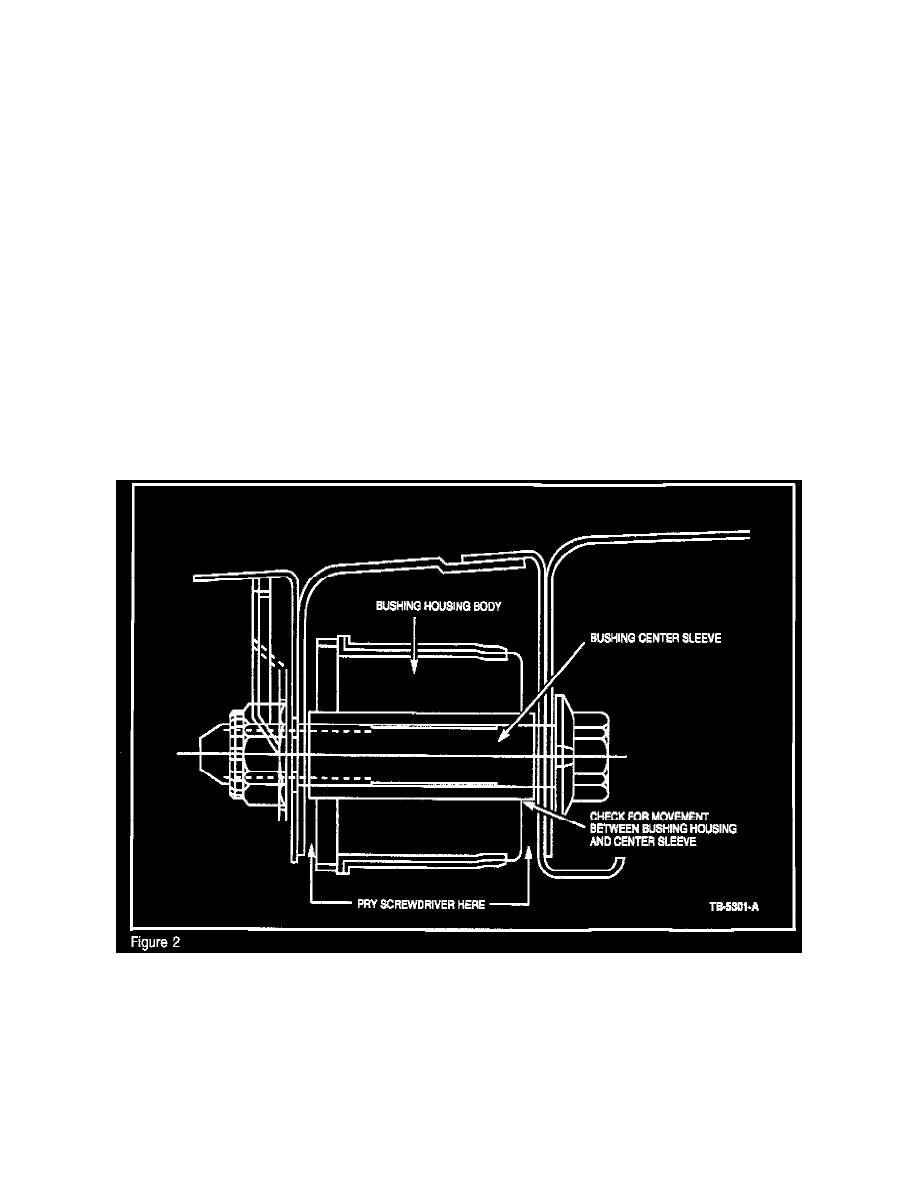Continental V8-4.6L DOHC VIN V (1998)

^
The "long" rod, spacer included, measures 38 mm (1.5") from the top surface of the nut to the shock rod end
^
The "short" rod measures 16 mm (0.63") from the top surface of the nut to the shock rod end
The two versions are completely interchangeable. It is entirely acceptable to have a "long" and a "short" version on the same vehicle.
Follow the Instruction Sheet provided with each damper for installation details.
NOTE
SOME VEHICLES BUILT PRIOR TO APRIL 1995 MAY HAVE A SHOCK ABSORBER UPPER RETAINING NUT THAT IS PART OF A
ONE-PIECE UPPER NUT/WASHER/INSULATOR ASSEMBLY INSTEAD OF A SEPARATE NUT, WASHER, AND INSULATOR AS USED
IN LATER PRODUCTION VEHICLES. THIS ONE-PIECE DESIGN WAS ONLY USED ON THE SHOCK ABSORBER WITH THE SHORT
ROD. THESE VEHICLES WILL NEED TO HAVE THE ORIGINAL ONE-PIECE NUT/WASHER/INSULATOR ASSEMBLY REPLACED
WITH THE INDIVIDUAL -18198- INSULATOR AND THE -18177- WASHER PROVIDED IN THE F50Y-18198-AA SHOCK ABSORBER
MOUNTING KIT. THE ORIGINAL ONE-PIECE NUT/WASHER INSULATOR ASSEMBLY AS WELL AS THE UNUSED PARTS IN THE
KIT MAY BE DISCARDED.
Rear Control Arms
After inspecting and installing the mass dampers as necessary, check the rear control arm bushings for movement and noise as shown.
1.
Raise the vehicle on a hoist to gain access to the rear control arm bushings.
2.
Locate the rear control arms on either side of the vehicle and note the locations of the bushings (2 per control arm, 1 toward the front of the
vehicle, and 1 toward the rear).
3.
Pry a flat-blade screwdriver between one side of the bushing housing and the body of the vehicle on the front bushing of the right rear control arm
(Figure 2).
4.
Wiggle the screwdriver to determine if movement between the body of the bushing housing and the center sleeve of the bushing exists. Listen for a
"clicking" noise generated by this movement.
5.
On the same bushing, pry the flat head screwdriver between the other side of the bushing housing and the body and wiggle. Again, look for
movement between the body of the bushing and the center sleeve of the bushing and listen for a clicking noise.
6.
Repeat Steps 3-5 on the remaining bushing of the right rear control arm to determine if the movement and subsequent clicking noise is present.
